
Viscount Dillon, of Costello-Gallen in the County of Mayo, is a title in the Peerage of Ireland. It was created in 1622 for Theobald Dillon, Lord President of Connaught. The Dillons were a Hiberno-Norman landlord family from the 13th century in a part of County Westmeath called 'Dillon's Country'. His great-grandson, the seventh Viscount, was a supporter of the Catholic King James II of England and was outlawed after the Glorious Revolution. He founded 'Dillon's Regiment' of the Irish Brigade in the French Army, which was supported by the Wild Geese and achieved success at Fontenoy in 1745.
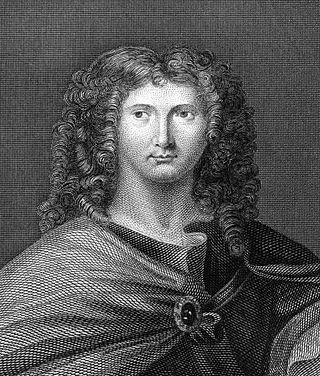
Earl of Roscommon was a title in the Peerage of Ireland. It was created on 5 August 1622 for James Dillon, 1st Baron Dillon. He had already been created Baron Dillon on 24 January 1619, also in the Peerage of Ireland. The fourth Earl was a courtier, poet and critic. The fifth Earl was a professional soldier, politician and courtier: he was friendly with Samuel Pepys, who refers to him several times as "Colonel Dillon" in his famous Diary. After the death of the tenth Earl, there were two prolonged investigations by the Irish House of Lords during the 1790s to ascertain the legitimacy of his son Patrick, against the rival claim by Robert Dillon, a descendant of the seventh son of the first Earl and the next male heir in line. These eventually found in Patrick's favour. The titles became dormant on the death of the eleventh Earl in 1816. However, in 1828 the United Kingdom House of Lords decided that the rightful heir to the peerages was Michael Dillon, another descendant of the seventh son of the first Earl, who became the twelfth Earl. The House of Lords decided against Francis Stephen Dillon, an inmate of a debtors' prison who dubiously claimed descent from the third son of the first Earl. The titles became extinct on the death of the twelfth Earl on 15 May 1850.
William Power Keating Trench, 1st Earl of Clancarty was an Irish aristocrat and politician and later United Kingdom statesman at the time of the Act of Union. His family, through his son Richard, became prominent and hereditary members of the Netherlands' nobility.

Francis Almeric Spencer, 1st Baron Churchill DCL FRS was a British peer and Whig politician from the Spencer family.
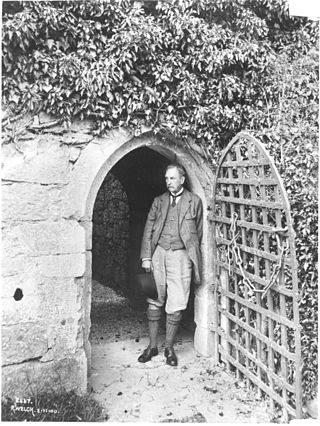
Baron Clonbrock, of Clonbrock in the County of Galway, was a title in the Peerage of Ireland. It was created on 3 June 1790 for Robert Dillon, who had earlier represented Lanesborough in the Irish House of Commons. His grandson, the third Baron, sat in the House of Lords as an Irish Representative Peer and served as Lord-Lieutenant of Galway. He was succeeded by his eldest son, the fourth Baron. He was also an Irish Representative Peer and Lord-Lieutenant of Galway. The title became extinct on the death of his son, the fifth Baron, on 1 November 1926.
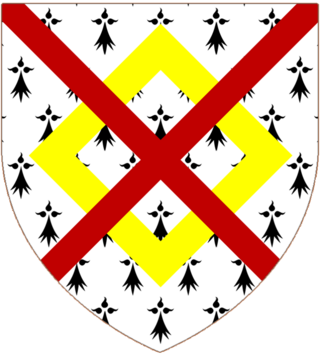
John David FitzGerald, Baron FitzGerald, PC, PC (Ire) was an Irish judge and Liberal politician.

Ahascragh is a village in east Galway, Ireland. It is located 11 km (7 mi) (7 mi) north-west of Ballinasloe on the Ahascragh/Bunowen River, a tributary of the River Suck. The R358 regional road passes through the village.
William Hare, 1st Earl of Listowel, known as Lord Ennismore from 1800 to 1816 and as the Viscount Ennismore and Listowel from 1816 to 1822, was an Irish peer and Member of Parliament.
Events from the year 1851 in Ireland.
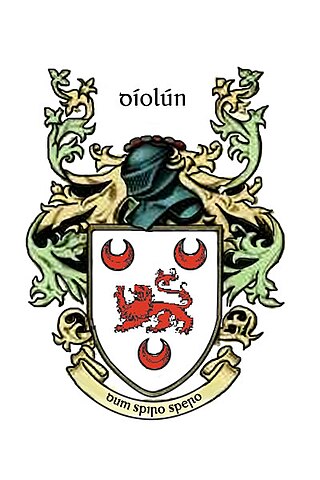
Dillon is an Irish surname of Breton origin, descending from a cadet branch of Viscomte de Leon in Northern Brittany. It first appeared in Ireland with the arrival of Sir Henry de Leon, in the service of Prince John in 1185. Sir Henry married Maud de Courcy, daughter of Sir John de Courcy and Affrica Guðrøðardóttir. Awarded large tracts of land by in Meath and Westmeath, one of the Dillons’ first Mott & Baileys can still be found at Dunnamona before the establishment of stone structures such as Portlick Castle.
Robert King may refer to:

Luke Gerald Dillon, 4th Baron Clonbrock KP PC (Ire) was an Irish peer.
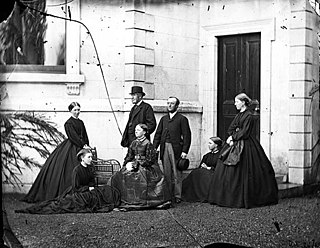
Robert Dillon, 3rd Baron Clonbrock, was an Irish peer.
Robert Dillon, 1st Baron Clonbrock PC, was an Irish politician.
Joseph Henry Blake, 1st Baron Wallscourt, was an Irish politician.
Thomas Dillon was an Irish judge and landowner: his descendants held the title Baron Clonbrock.
Luke Dillon may refer to:

Apollo University Lodge No 357 is a Masonic Lodge based at the University of Oxford aimed at past and present members of the university. It was consecrated in 1819, and its members have met continuously since then.
John Plunket or Plunkett may refer to:
Colonel Richard Lysaght Hare, Viscount Ennismore was an Anglo-Irish politician.
This page is based on this
Wikipedia article Text is available under the
CC BY-SA 4.0 license; additional terms may apply.
Images, videos and audio are available under their respective licenses.








